the education of henry
American History Tour
Day 25: Historic Jamestowne and Jamestown Settlement
2023-10-08
We said goodbye to DC this morning and headed to Williamsburg. It was a beautiful morning for a drive and we made good time.

Pretending to be Captain Jack Sparrow in the gift shop while Mom bought our tickets.
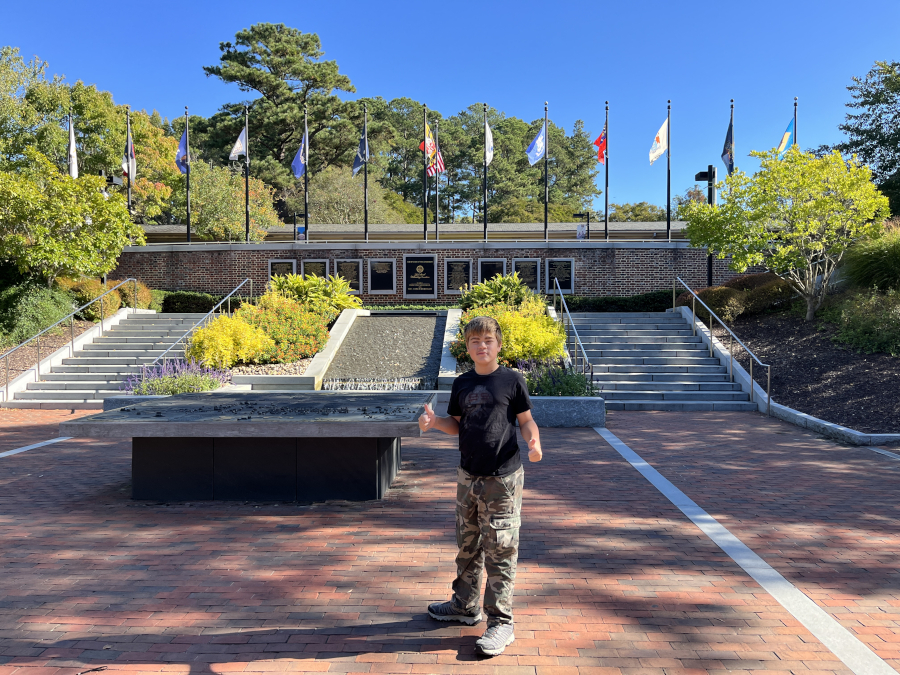
At the entrance to the visitor center.
We started out at Historic Jamestowne to get an idea of what really happened here at the beginning.

We arrived in time for the 11:00 tour, but we had to hustle. It was worth it - the tour guide was amazing. He told a great story about how and why Jamestown came to be, what happened here, and how our view of it has changed over time.

A view from the fort. Jamsetowne sits on an island in the James River. In fact, for about 150 years, until 1994, everyone believed the fort was gone - that it had been swallowed up by the river. But in 1994 an archaeologist, Dr. William Kelso, got permission to dig at the site - and found remains of the fort on the island within six months. Workers at the site have since determined that most of the land the fort occupied is still there, and a partial replica has been constructed.
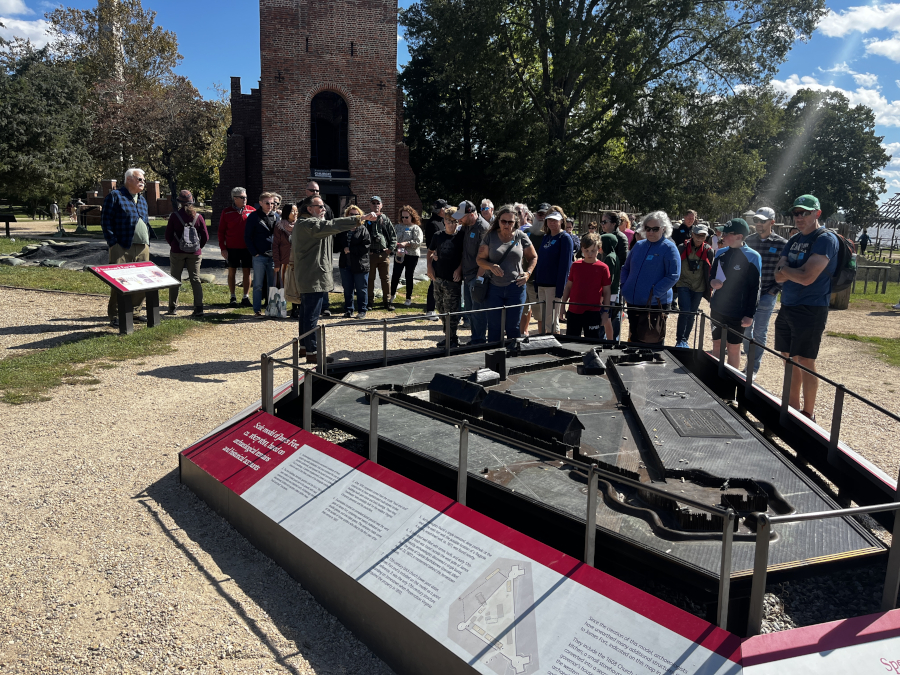
In the foreground is a model of the fort as it existed.
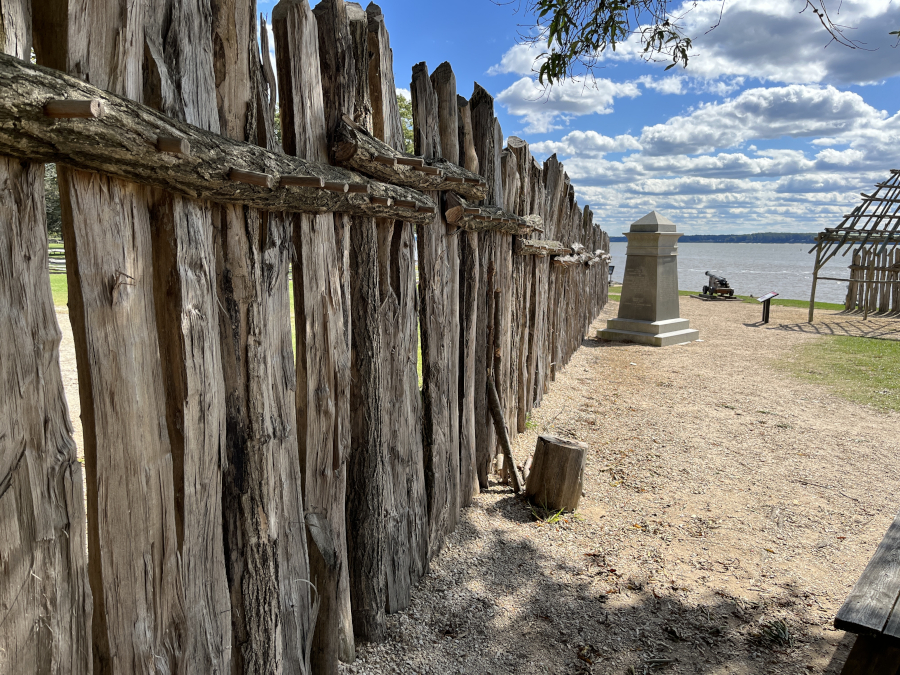
A reconstructed wall that follows the line of the actual wall. Just under the topsoil is a layer of clay. When the workers dug to find the wall location, they found the actual spots where the posts for the palisade were - the locations were colored a different shade of red from the surrounding clay, a change caused by the chemical interaction of the decaying wood with the clay.
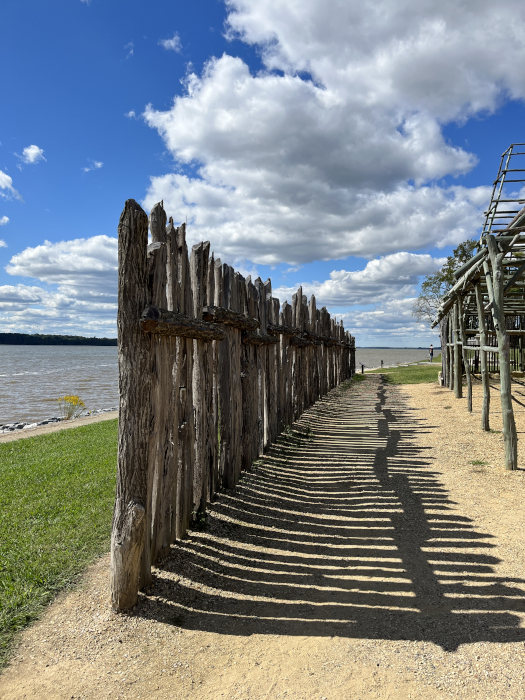
Another reconstructed wall.

A partially reconstructed barracks building in the fort.
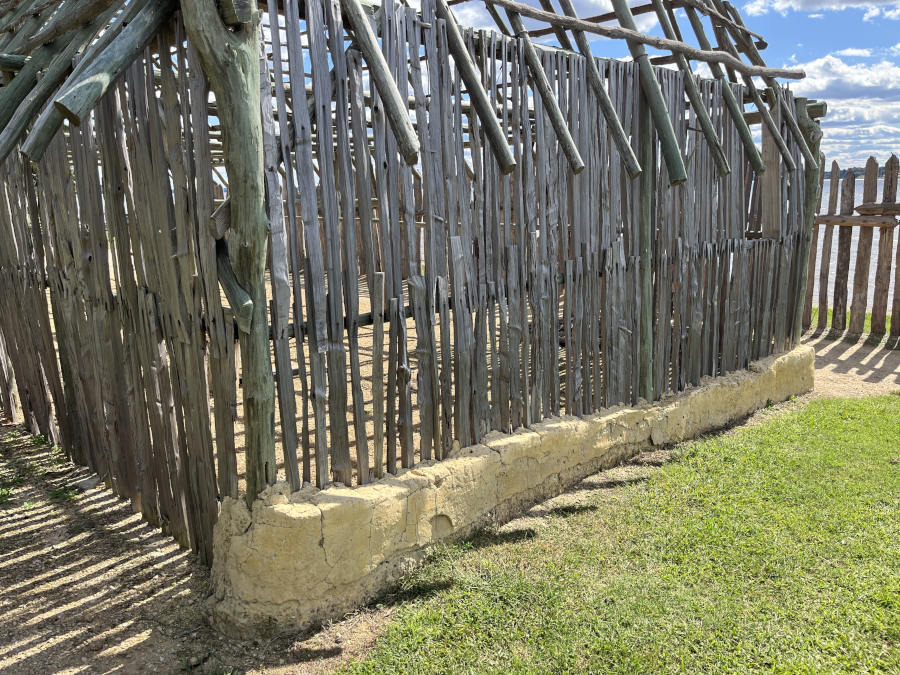
At the base of the barracks, the reconstruction shows that the colonists used the clay they dug up to make a stucco exterior for the building. Which is why most of the buildings had full cellars - they needed the clay to make the walls.

This is the original church building - you can see the same kind of construction used at the barracks.
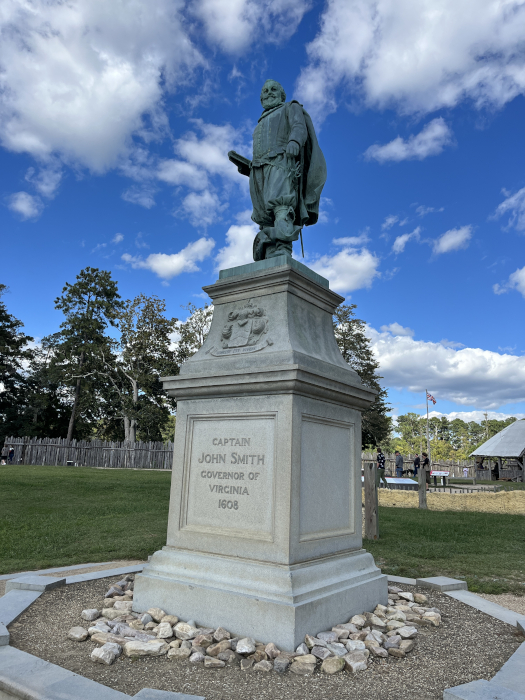
The statue of John Smith.
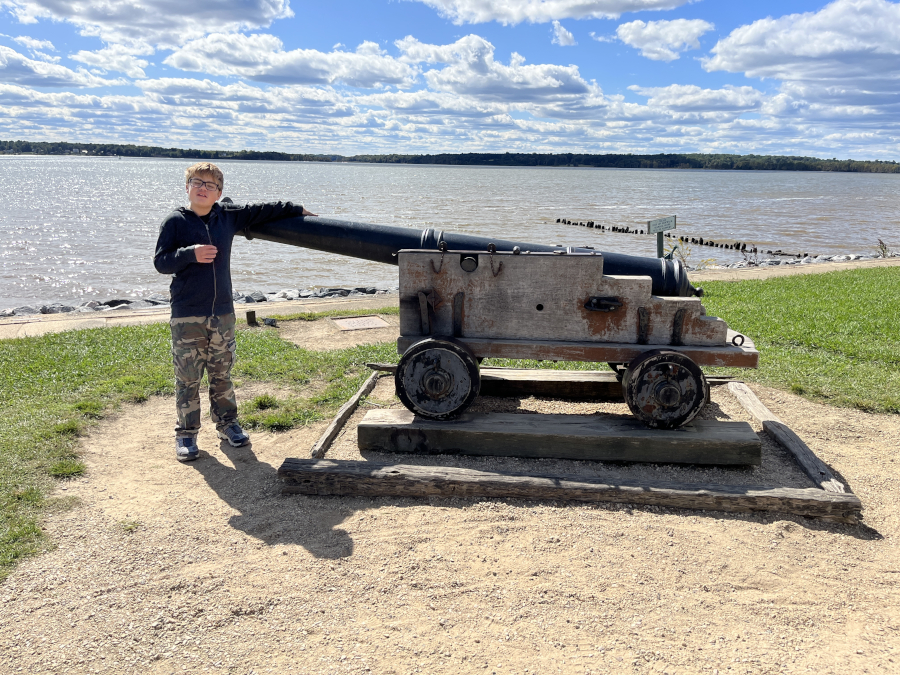
Me with the one of the cannons on display.

This is one of the original wells on the island. It was a great source of artifacts - when the wells stopped working, the colonist filled them with garbage.
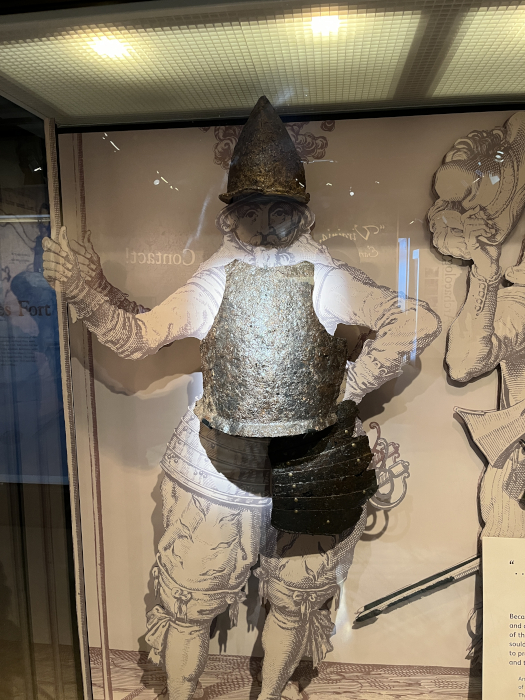
Some armor recovered from the site. The archaeologists have found over 4 million artifacts from the site.
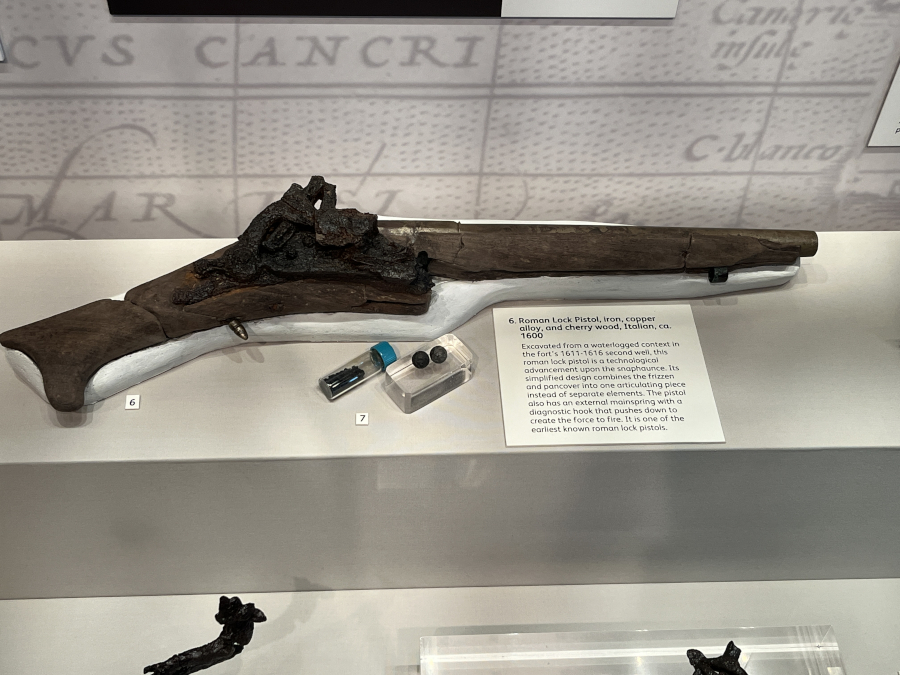
A pistol found on site.

A picture from when the original church was found.

A cross-section of a wall that is typical of how the original buildings were constructed.

Me with Pocahantas.
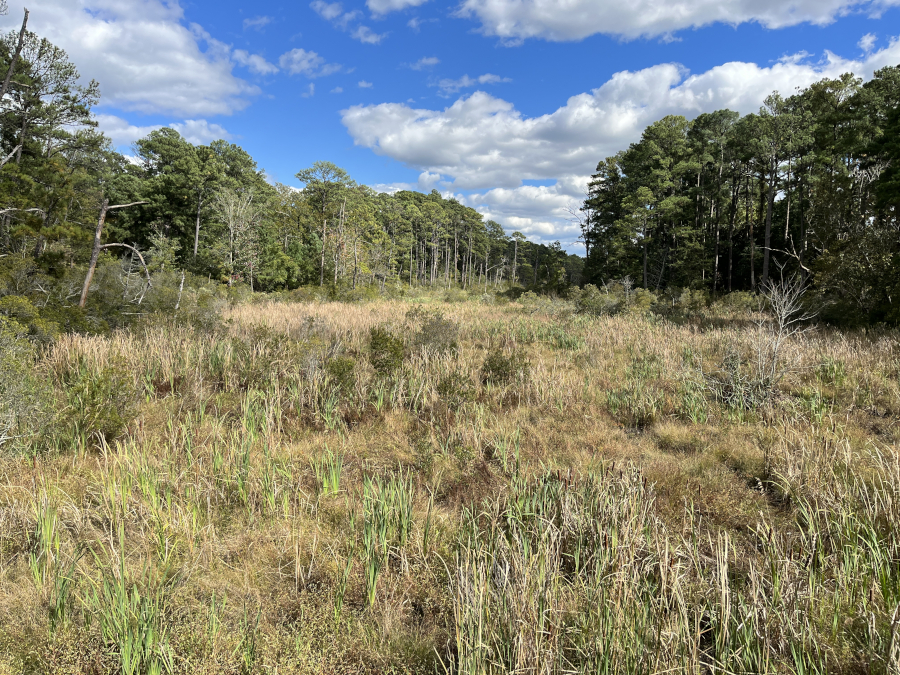
Some of the surrounding area - a lot of swamp.

The obelisk placed for the 300th anniversary of the colony.
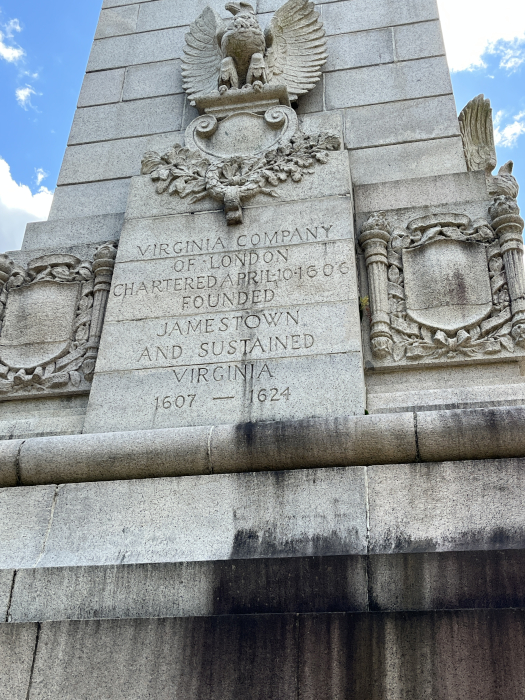
The inscription on the obelisk.
From Historic Jamestowne we went next door to the Jamestown Settlement, which is the full reconstruction of the site with people living as the colonists would have.
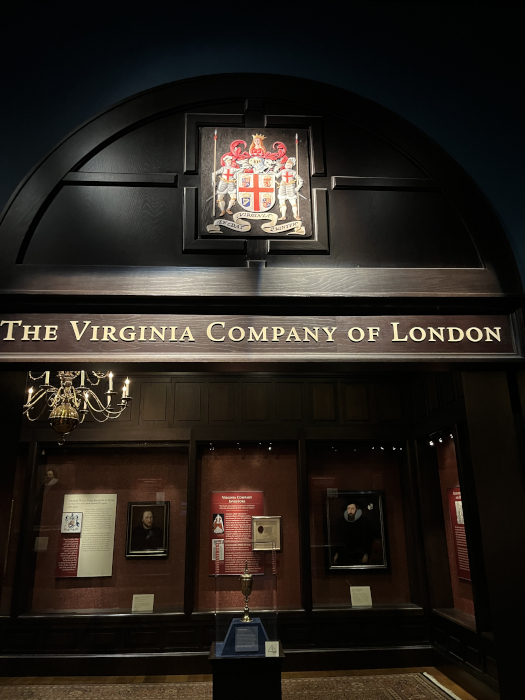
First we start with a museum. It was really nice.

By the replica of the Susan Constant.

The native village.
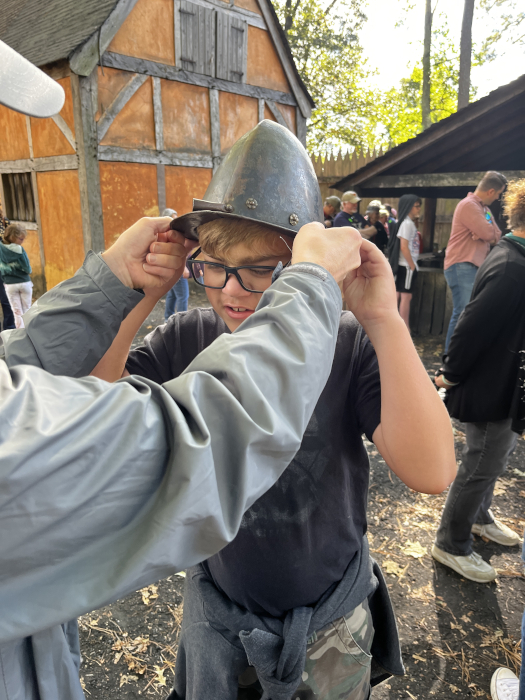
Trying on some armor.

It's heavy. Very heavy. Imagine wearing this in the hot sun!
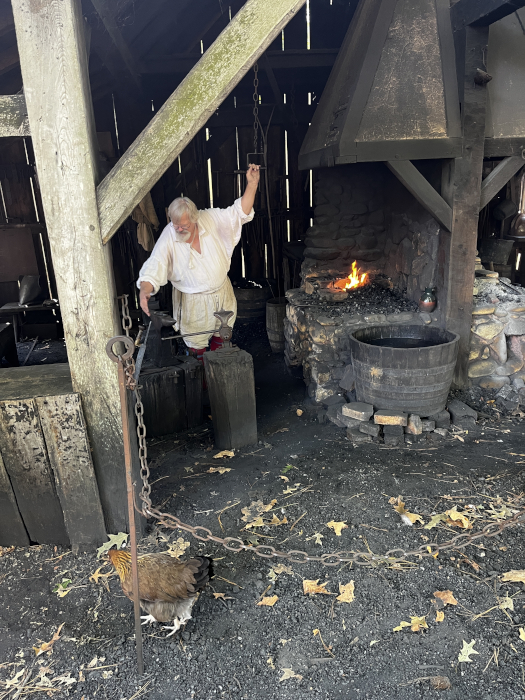
The blacksmith.

In front of the Susan Constant, the ship our ancestor, Captain Christopher Newport, sailed. This is one of the ships that brought the colonists over.

On the ship.
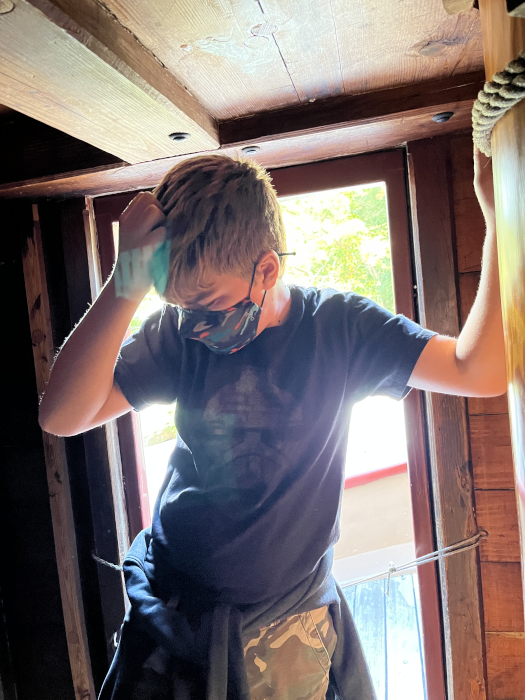
Ouch! I forgot how low the ceilings are on these things!
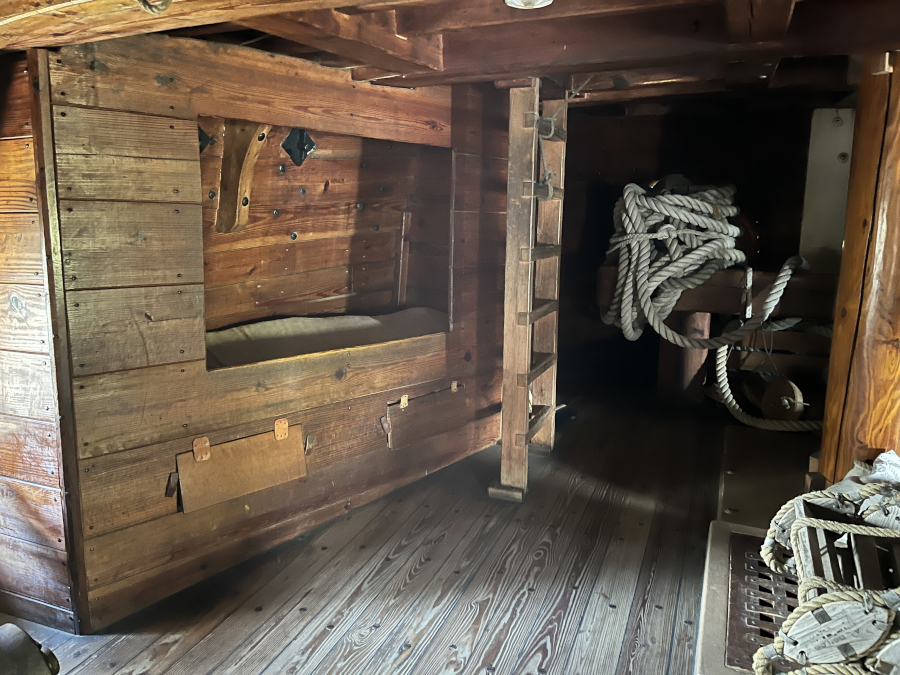
Checking out the crew quarters.
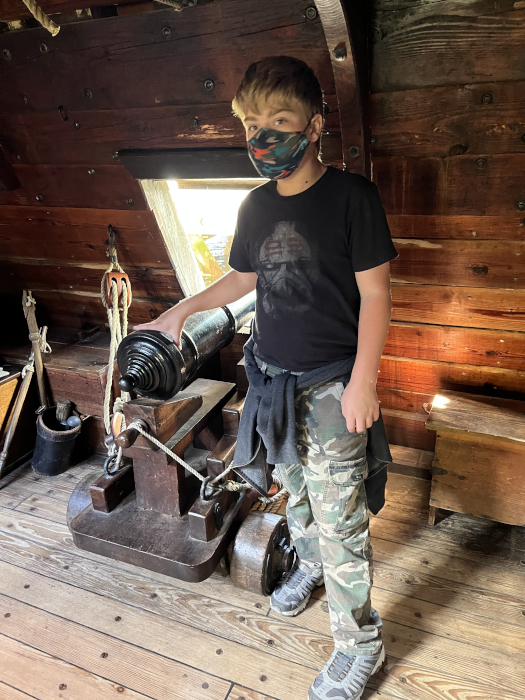
Found the cannon!
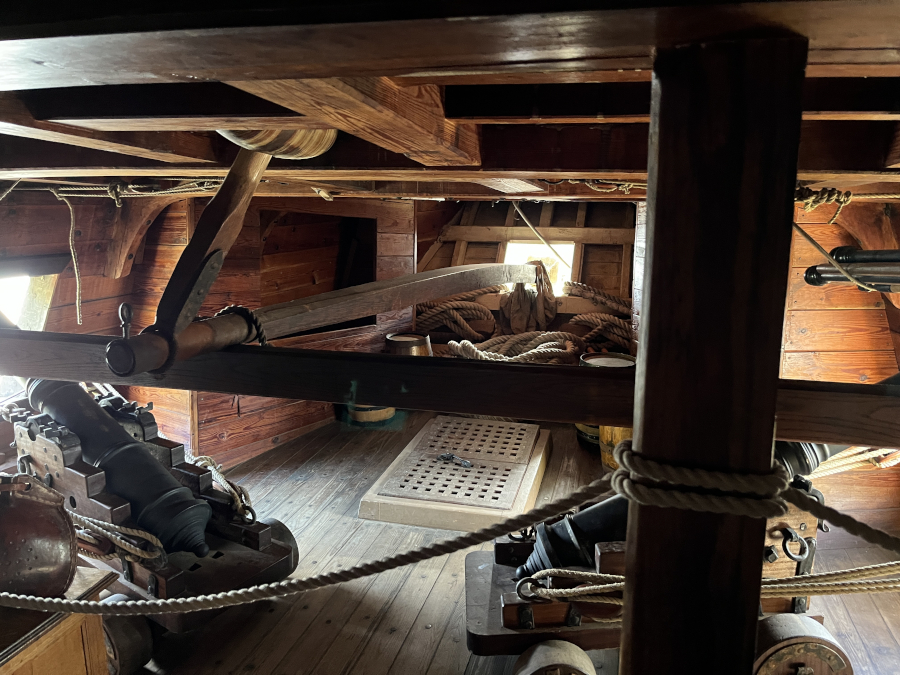
The rudder.
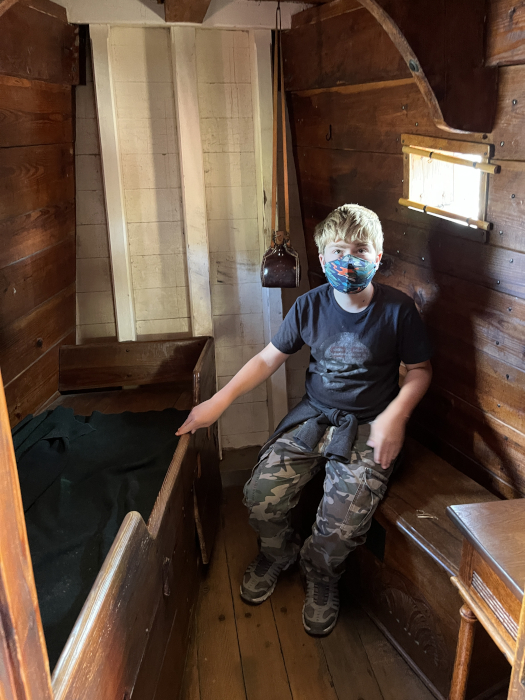
In the captain's quarters.

On the back deck.
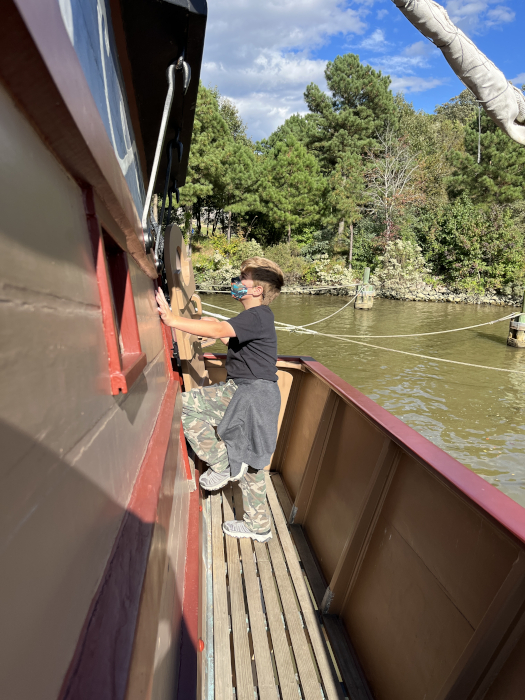
Climbing back in.

The Discovery, one of the three ships that originally arrived at the site.
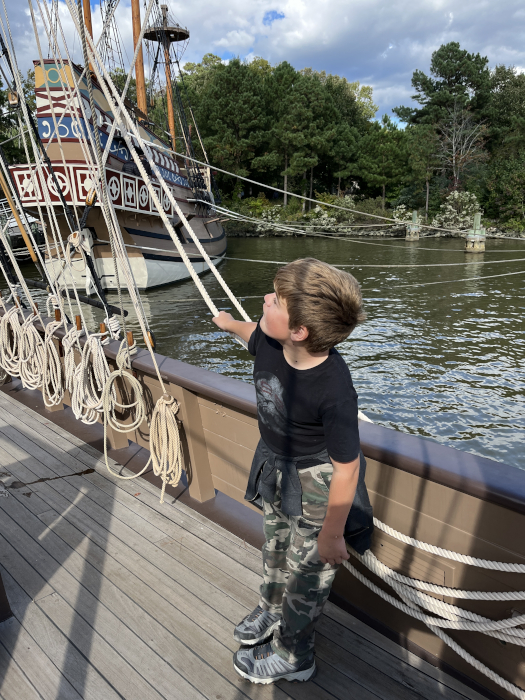
On the little ship.

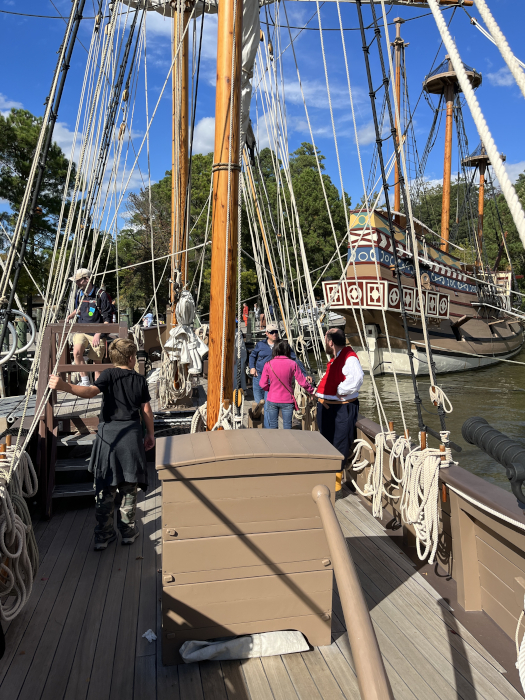
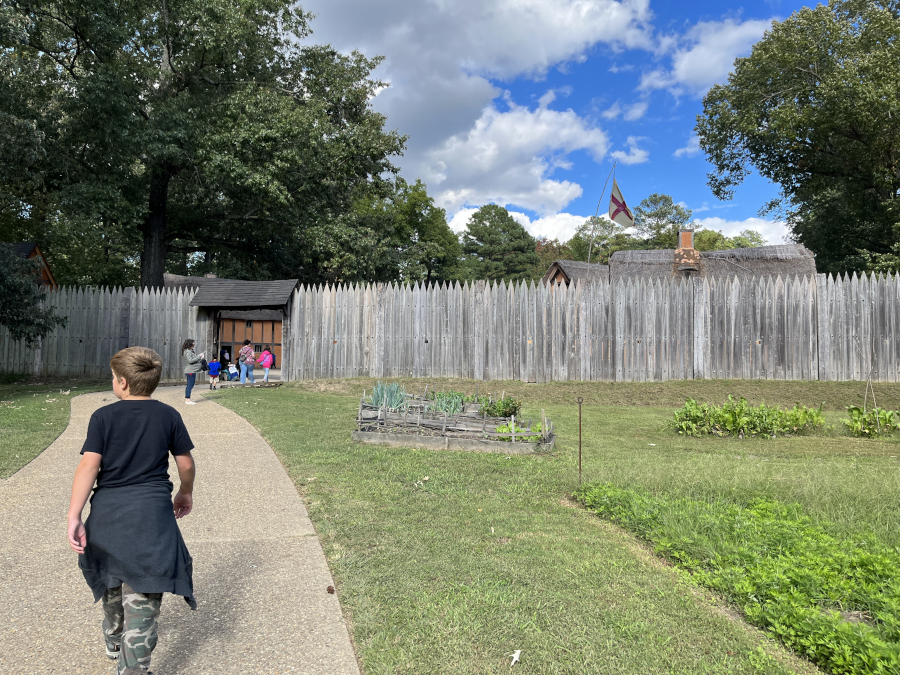
Walking from the ships to the fort.
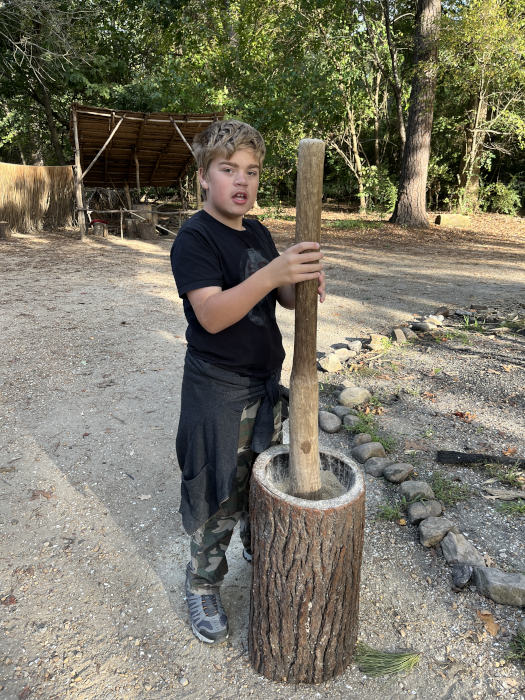
Grinding some corn.
We actually spent over an hour talking to one of the re-enactors in the native village. We asked a lot of questions and learned so much. But we were so wrapped up in the conversation Dad forgot to take some pictures.
And then we had to go - the bell rang to tell everyone to leave. But we have a few more days to explore, so that is good. We stopped to get some groceries and then checked into our hotel.
And that was the day! Take care!